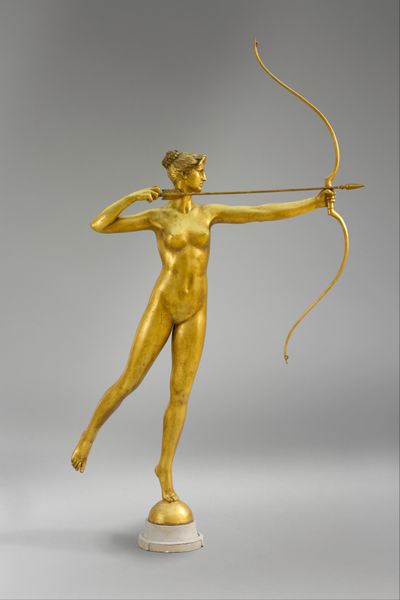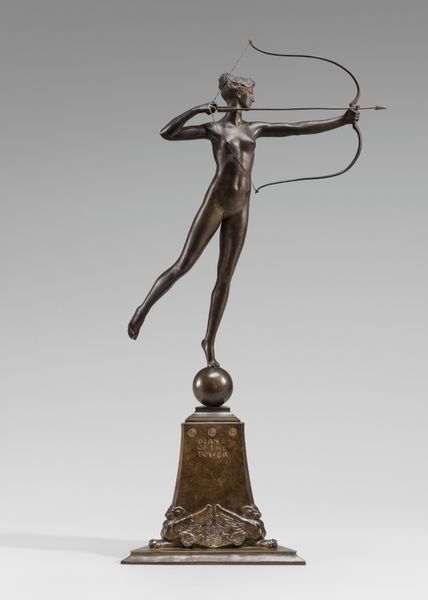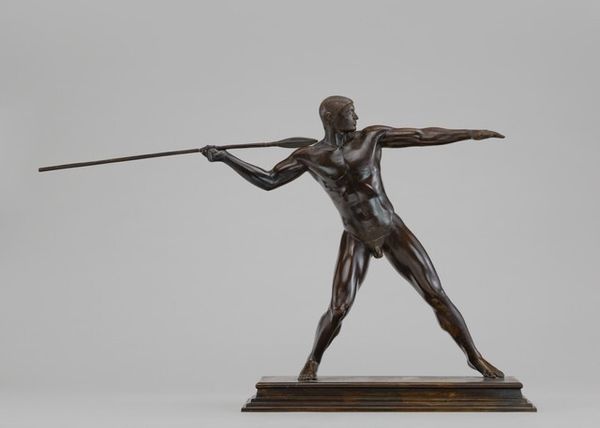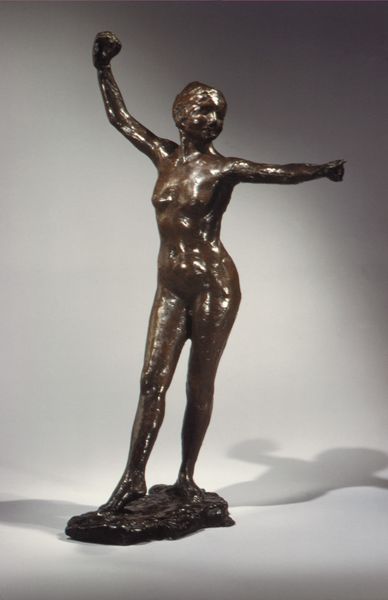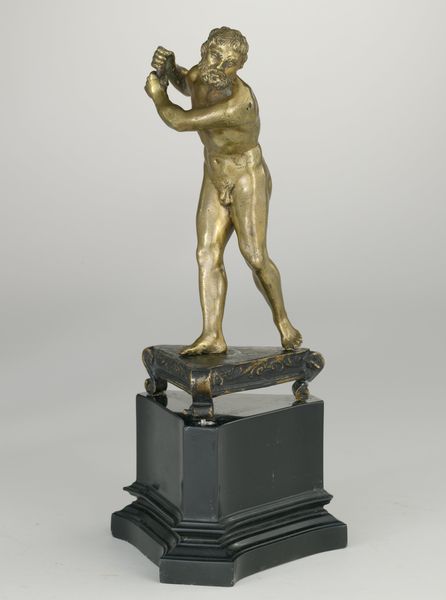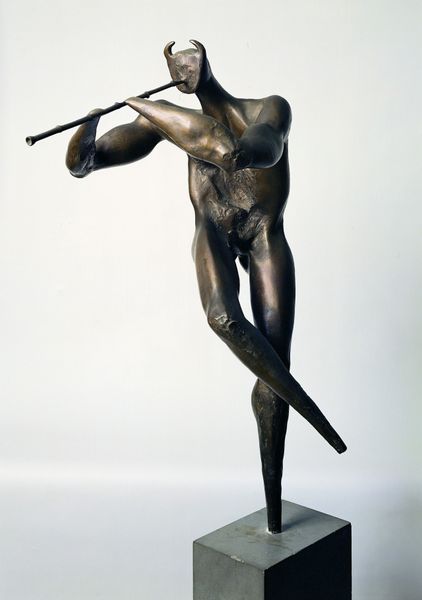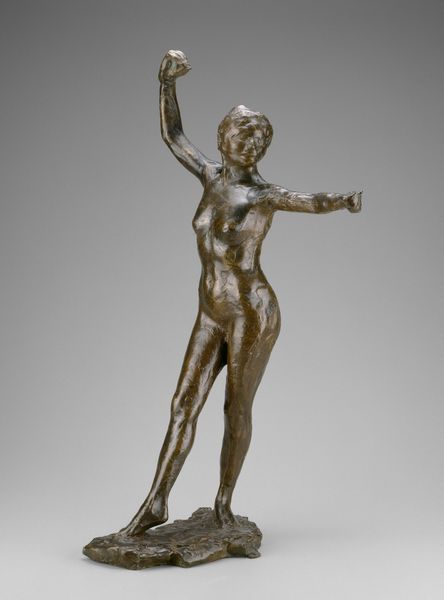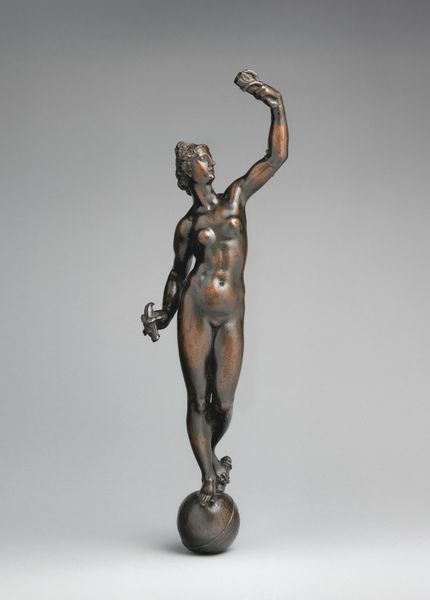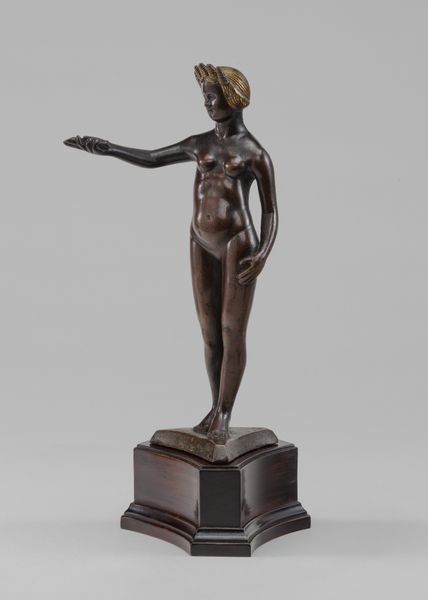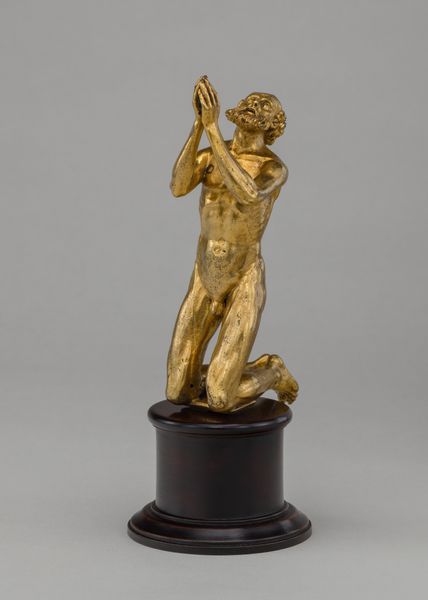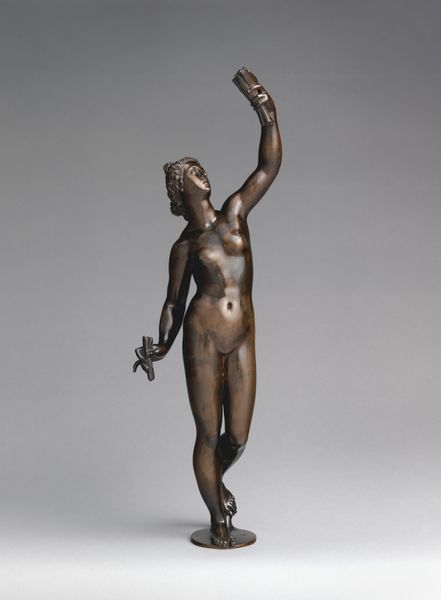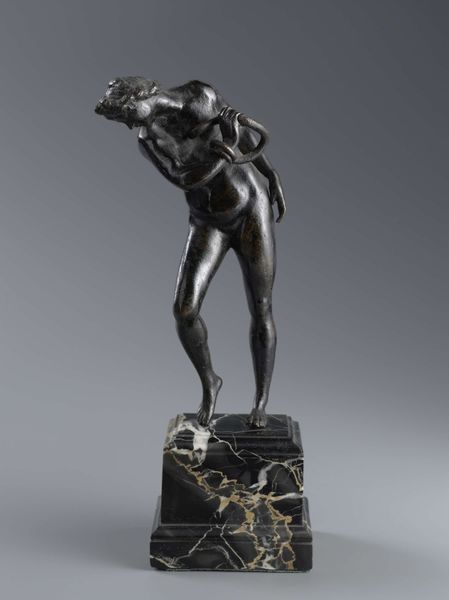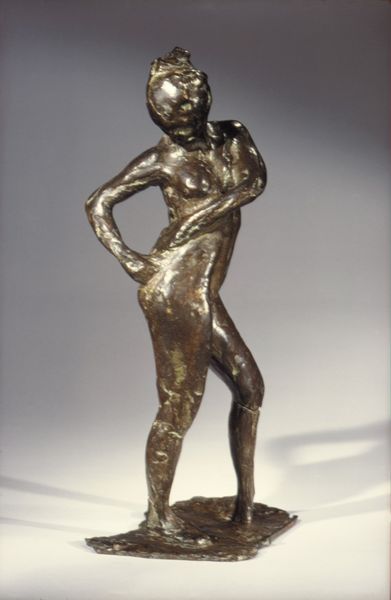
bronze, sculpture
#
art-nouveau
#
allegory
#
sculpture
#
classical-realism
#
bronze
#
female-nude
#
sculpture
#
nude
#
statue
Dimensions: 28 1/4 x 16 1/4 x 14 in. (71.8 x 41.3 x 35.6 cm)
Copyright: Public Domain
Curator: This striking gilded bronze sculpture, titled "Diana," was created by Augustus Saint-Gaudens between 1893 and 1894. She now resides at the Metropolitan Museum of Art. Editor: The figure poised in balanced motion is certainly elegant, but there’s an almost unsettling rigidity to her posture. She has this unwavering gaze, a focused determination—almost confrontational. Curator: Diana, the Roman goddess of the hunt, embodies this independence and strength. The bow and arrow are her most recognizable attributes, signifying her skill and autonomy, themes which resonate even today, offering strength to marginalized voices pushing back against injustice. The artist has rendered her nude figure with classical grace, but it's tempered with a distinctly Art Nouveau sensibility. The curvature of her bow echoes in her coiffure, creating a lovely harmony. Editor: Yet her nudity, in a modern context, prompts us to question the male gaze that often dominates depictions of the female form in art. How does her vulnerability intersect with her agency? And I think we need to discuss the very obvious, continued under-representation and even misrepresentation of women in both art and our own history, so can a sculpture like this contribute to a damaging legacy or challenge it? The act of pulling back an arrow to fire can even been seen as aggressive! Curator: You’ve raised a valid point. It is undeniable that her presentation, the almost cold perfection of her physique, can reflect established and limiting beauty standards, and her body appears both athletic and defenseless at once, as well as desirable. Editor: It's her footing atop the sphere that fascinates me; she balances perilously on one foot. To what extent are our own icons balanced in this way as well? Curator: Indeed. Perhaps the artist invites us to ponder what it means to seek to hit the target; her iconography presents the artist’s vision of what’s good, just, and beautiful while offering an idea or aspiration in cultural memory and history. It invites ongoing re-interpretation to find the continued, complex connections that sustain the strength, purpose and agency of the enduring Divine Feminine. Editor: So a powerful figure then—albeit balanced rather precariously on the cusp of many ideas still so current. Thank you. Curator: Indeed. Let us carry those complexities with us as we continue to seek our own true aims.
Comments
No comments
Be the first to comment and join the conversation on the ultimate creative platform.
